Understanding the Complex Relationship Between Addiction and Codependency
Addiction and codependency are often perceived as separate issues, but they frequently coexist, forming a complex, mutually reinforcing cycle. This article explores their definitions, traits, how they interact, and effective ways to address these intertwined problems. By understanding their relationship, individuals and families can better navigate pathways to recovery, healing, and healthy relationships.
Foundations of Addiction and Codependency
What are addiction and codependency?
Addiction is a chronic disorder characterized by compulsive engagement in rewarding stimuli, despite adverse consequences, often involving substances like drugs, alcohol, or behaviors such as gambling. Codependency, on the other hand, refers to an excessive emotional reliance on another person, typically one who needs support due to illness or addiction. It manifests through behaviors such as people-pleasing, poor boundaries, low self-esteem, and an urgent need to control or fix others.
What traits and behaviors are associated with addiction?
People struggling with addiction often display cravings, denial of the problem, preoccupation with the substance or behavior, neglect of responsibilities, and a loss of control. They may also experience withdrawal symptoms and significant emotional and physical health issues.
What traits and behaviors are associated with codependency?
Codependent individuals tend to exhibit martyrdom, resentment, poor boundaries, and manipulation. They may make excuses for loved ones’ harmful behaviors, neglect their own needs, and feel responsible for others’ happiness and well-being. Low self-esteem and a strong desire to be needed are typical traits.
How do addiction and codependency intertwine?
These conditions frequently reinforce each other. For example, a codependent person may enable a loved one’s addiction by providing money or shelter, which sustains the addictive cycle. Conversely, addiction can foster behaviors like emotional dependency and control, deepening codependent patterns.
Resources for understanding addiction and codependency
Educational resources are widely available through reputable organizations like Tree House Recovery, which offers PDFs, worksheets, assessments, and expert-reviewed articles. These materials cover symptoms such as denial, preoccupation, and craving, along with practical exercises on boundary setting and self-assessment. Books, online courses, and peer-reviewed studies provide further insights. Many therapy centers and support groups also distribute valuable guides and tools aimed at fostering self-awareness and healthier relationships.
How to access educational information
Searching online for terms like "educational resources on addiction and codependency" yields a range of PDFs, videos, and guides from clinics, support organizations, and mental health platforms. These resources are typically free or available for purchase and can serve as a foundation for understanding personal or loved ones’ behaviors.
| Table of Comparison | Traits | Behaviors | Additional Notes |
|---|---|---|---|
| Addiction | Cravings, denial, withdrawal | Neglect of responsibilities, compulsive use | Can involve substances or behaviors |
| Codependency | Martyrdom, low self-esteem, poor boundaries | Enabling behaviors, people-pleasing | Often linked to dysfunctional family dynamics |
| Interconnection | Enabling, emotional reliance | Impact mutual reinforcement cycles | Both can be addressed through therapy and support groups |
Traits and Signs of Addiction and Codependency
What are some signs and traits associated with addiction and codependency?
Addiction and codependency share certain behaviors and characteristics that often appear together in troubled relationships. Recognizing these signs is essential for early intervention and effective treatment.
In addiction, prevalent traits include compulsive substance use despite negative consequences, a loss of control over intake, and behaviors aimed at obtaining or hiding the substance. Enabling actions, such as providing money, shelter, or excusing destructive behaviors, further sustain the addiction.
Meanwhile, common features of codependency involve excessive caregiving, a persistent need to please others, difficulty setting boundaries, and low self-esteem. Those affected often prioritize another person’s needs over their own, seeking external validation and feeling responsible for others’ happiness or problems.
Other indicators include denial of genuine feelings, an exaggerated sense of responsibility for loved ones’ issues, control issues through manipulation or criticism, and emotional dependence. They might also have trouble expressing their needs, suffer from feelings of guilt when asserting themselves, or become overly anxious about the well-being of others.
Both conditions can lead to mental health struggles like depression and anxiety, and create dysfunctional relationship dynamics. Awareness of these traits can prompt individuals to seek therapy, join support groups, and work on establishing healthier boundaries, ultimately improving their mental and emotional well-being.
Manifestation of symptoms and behaviors
In practical terms, symptoms of addiction may involve frequent dishonesty, secrecy, and neglect of personal responsibilities. For example, an addict might continually make excuses for their substance use or hide their behavior from loved ones.
Codependent behaviors often include making excuses for an addicted partner, feeling responsible for their recovery, and neglecting one’s own needs. People may also exhibit obsessive thoughts about others, become manipulative to control outcomes, or display excessive anxiety about the addiction.
When these traits are observed together, they can create a cycle where each feeds into the other—addiction fuels codependent behaviors, and codependency sustains the addiction. Recognizing these sessional signs and traits is the first step toward breaking free from these unhealthy patterns.
The Cyclical Relationship Between Addiction and Codependency
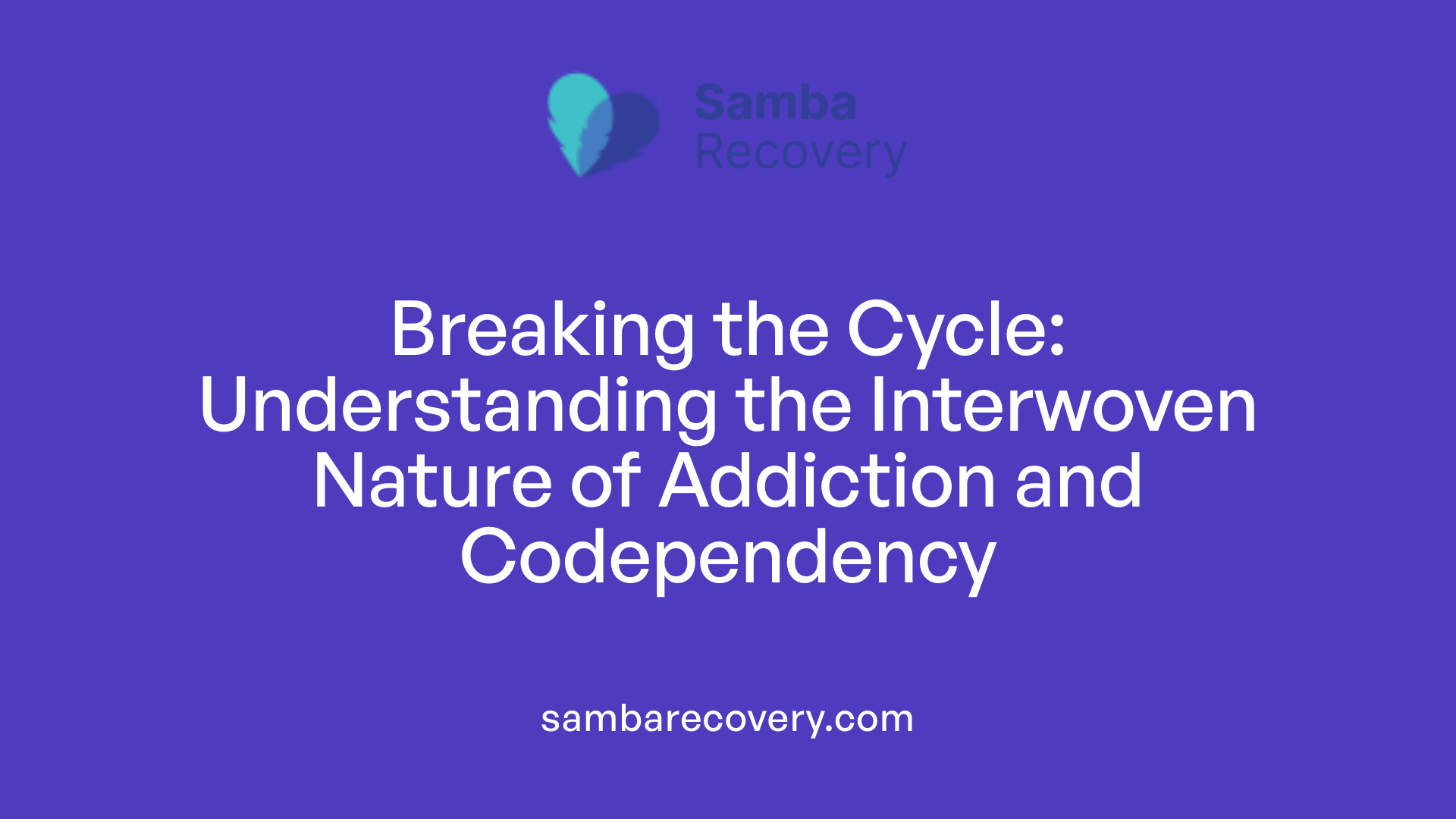
How does addiction influence or exacerbate codependent relationships?
Addiction plays a significant role in intensifying and deepening codependent relationships. When one partner struggles with substance use or behavioral addiction, the other often responds with enabling behaviors. This includes providing money, shelter, or supplies to support the addicted individual, which inadvertently sustains the addiction cycle.
Codependent partners typically feel responsible for managing or controlling the addict’s behavior, making excuses for their actions, and shielding them from the repercussions of their addiction. Such actions weaken personal boundaries and foster emotional reliance, where the codependent derives a sense of purpose and self-worth from being needed.
The presence of addiction can amplify feelings of resentment, frustration, and low self-esteem in the codependent, which can become entrenched over time. Controlling behaviors may increase as the codependent tries to maintain stability, yet these efforts often prevent the addict from facing the reality of their situation and seeking help.
Furthermore, addiction can obstruct recovery efforts. Enabling behaviors may provide a false sense of relief or control, making the addicted person less likely to pursue treatment. The relationship dynamic becomes so intertwined that healing both individuals requires addressing addiction and codependency together.
The bidirectional reinforcement cycle
This relationship forms a vicious cycle where addiction and codependency continuously reinforce each other. The addicted partner’s behavior fosters the codependent’s enabling actions, which in turn sustain and disguise the addiction.
As the cycle persists, both parties may experience growing emotional turmoil, loss of independence, and confusion about personal identity and boundaries. The codependent’s efforts to control or fix the addiction often lead to further emotional exhaustion and an increased risk of relapse for the addict.
Breaking this cycle requires specialized treatment approaches that focus on developing healthy boundaries, enhancing self-esteem, and fostering emotional independence. Therapies such as counseling, support groups, and family therapy are essential to address the intertwined issues of addiction and codependency.
In summary, addiction not only worsens the dynamics within a relationship but also creates a reinforcing environment that makes recovery more challenging. Effective intervention must simultaneously target addictive behaviors and codependent patterns to promote genuine healing.
Origins and Development of Codependency
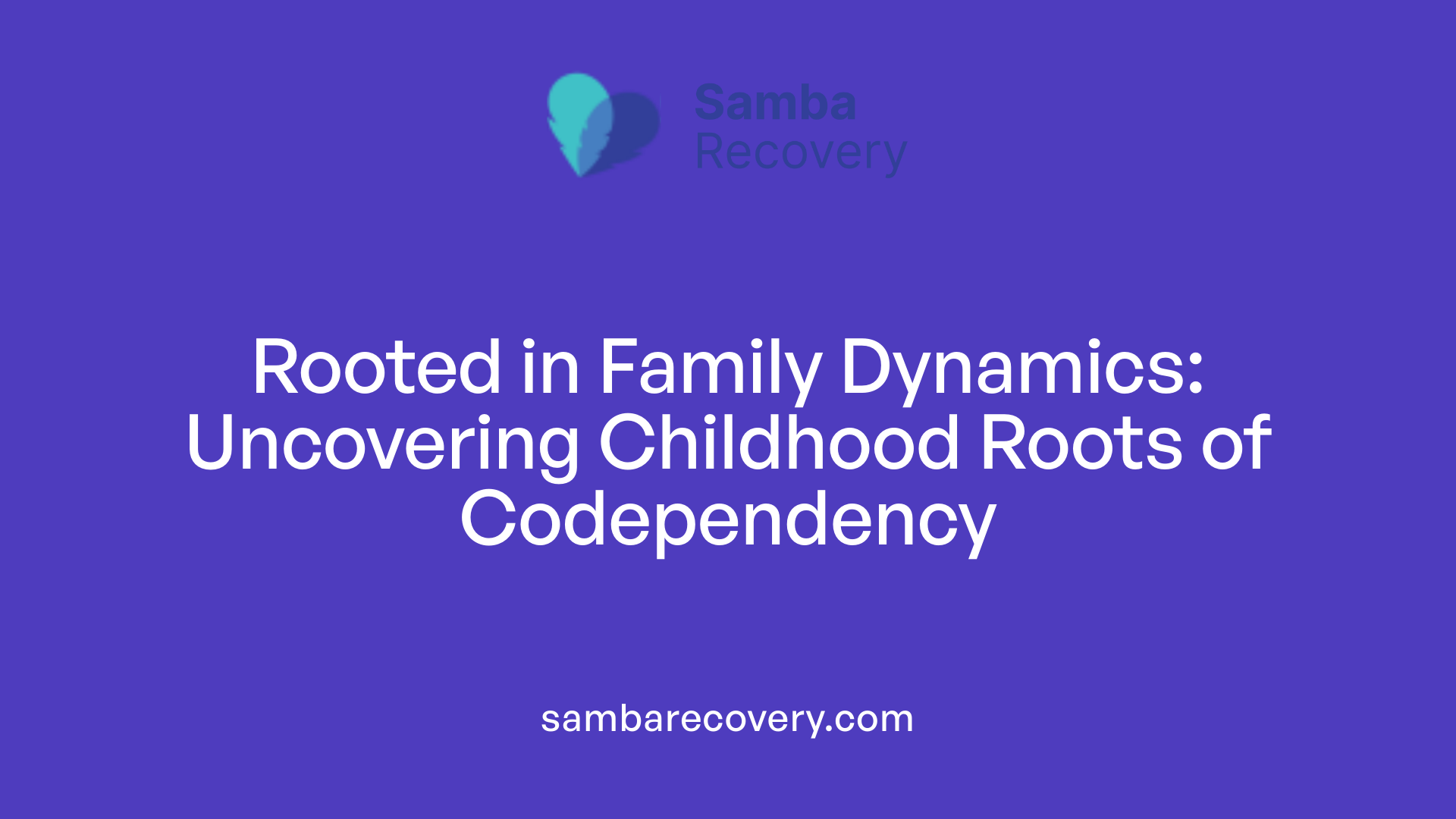
Childhood roots and family dynamics contributing to codependency
Many individuals develop codependent tendencies early in life, often rooted in dysfunctional family environments. Families experiencing addiction, emotional neglect, or abuse can contribute to a child learning to prioritize others’ needs over their own. Children in such settings may assume caretaking roles or become overly responsible for family members, shaping patterns of behavior that persist into adulthood.
High stress levels, parental conflicts, and emotional unavailability are common factors. Children who experience neglect or abuse might learn to suppress their feelings and continuously seek approval from others, fostering low self-esteem.
Learned behaviors passed through generations
Codependency can also be a learned behavior passed down through family lines. Parents with addiction or mental health issues might inadvertently model unhealthy relationship dynamics. These patterns, like boundary issues, martyrdom, and difficulty saying ‘no,’ are often transmitted from one generation to the next.
Over time, these behaviors become ingrained, making it challenging for individuals to establish healthy boundaries or maintain autonomy. Recognizing these roots is crucial in breaking the cycle and fostering healthier relationships.
What can be mistaken for or overlap with codependency?
It is essential to distinguish codependency from other mental health conditions that share similar traits. Overlap can occur with:
| Disorder | Common Features | Differences |
|---|---|---|
| Cluster B Personality Disorders | Emotional volatility, manipulation, need for attention | These are distinct, deeply ingrained personality traits, often more severe |
| Dependent Personality Disorder | Excessive reliance on others for decision-making | More pervasive, with a chronic pattern of submissiveness |
| Complex PTSD | Trauma-related emotional dysregulation | Often includes flashbacks and dissociation, which are less common in typical codependency |
| Obsessive-Compulsive Disorder | Perfectionism, control issues | Focused on routines and order, not necessarily relational dependence |
| Autism Spectrum Disorder & Sensory Processing Sensitivity | Social communication differences, heightened sensitivities | A neurological basis, not solely relational patterns |
Understanding these overlaps helps in providing accurate diagnosis and targeted treatment plans.
Treatment Approaches for Addressing Addiction and Codependency
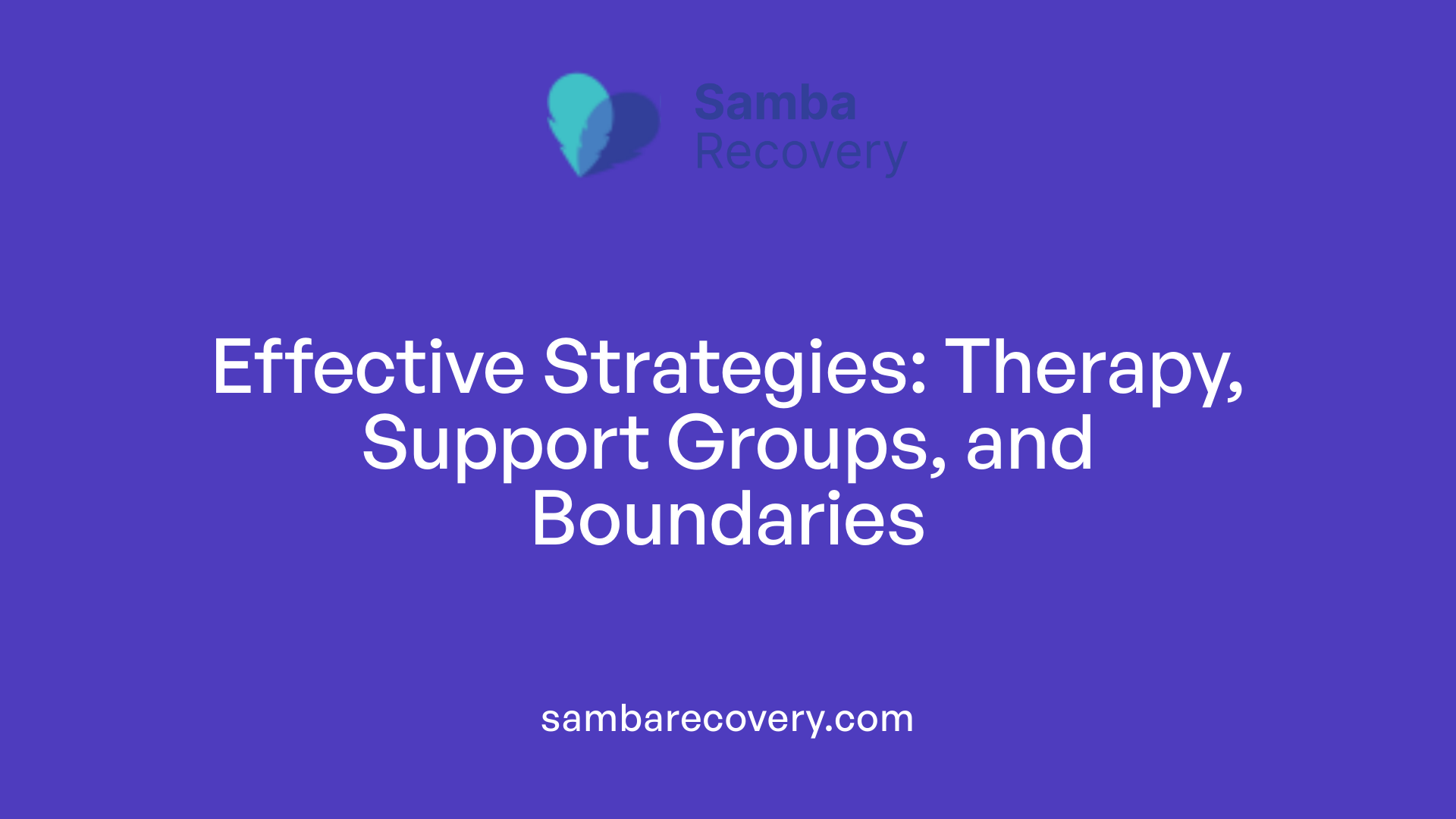
What are effective treatment approaches and strategies for addressing addiction and codependency?
Addressing addiction and codependency requires a multifaceted approach that combines various therapeutic and supportive strategies. One of the most effective methods involves engaging in different forms of psychotherapy. Individual therapy, such as cognitive behavioral therapy (CBT) and emotionally focused therapy, helps individuals recognize and modify harmful thought patterns and emotional responses that sustain unhealthy relationship dynamics.
Support groups are also vital components of treatment. Groups like Co-Dependents Anonymous (CoDA) and Al-Anon provide a safe space for individuals to share experiences, gain mutual support, and develop a sense of community. These groups foster accountability, boost self-awareness, and promote resilience by encouraging members to practice honesty and self-reflection.
Establishing and maintaining healthy boundaries is crucial. Learning to say no and defining personal limits helps prevent enabling behaviors that may support addiction or perpetuate codependent patterns. Alongside boundaries, enhancing communication skills enables individuals to express their needs openly and assertively, reducing emotional reliance on others.
Practicing self-care strategies is essential for long-term recovery. Techniques such as mindfulness meditation, regular exercise, and self-compassion activities help manage stress and build emotional strength. Recognizing the importance of ongoing support, resources like the Substance Abuse and Mental Health Services Administration (SAMHSA) helpline are available to connect people with local treatment options, including counseling, detox programs, and community support.
Long-term recovery often involves continuous engagement in therapy, ongoing participation in support groups, and personal growth activities. These combined efforts help individuals maintain progress, strengthen their self-esteem, and develop healthier relationship patterns, reducing the risk of relapse or regressive behaviors.
Scientific Insights and Research Findings
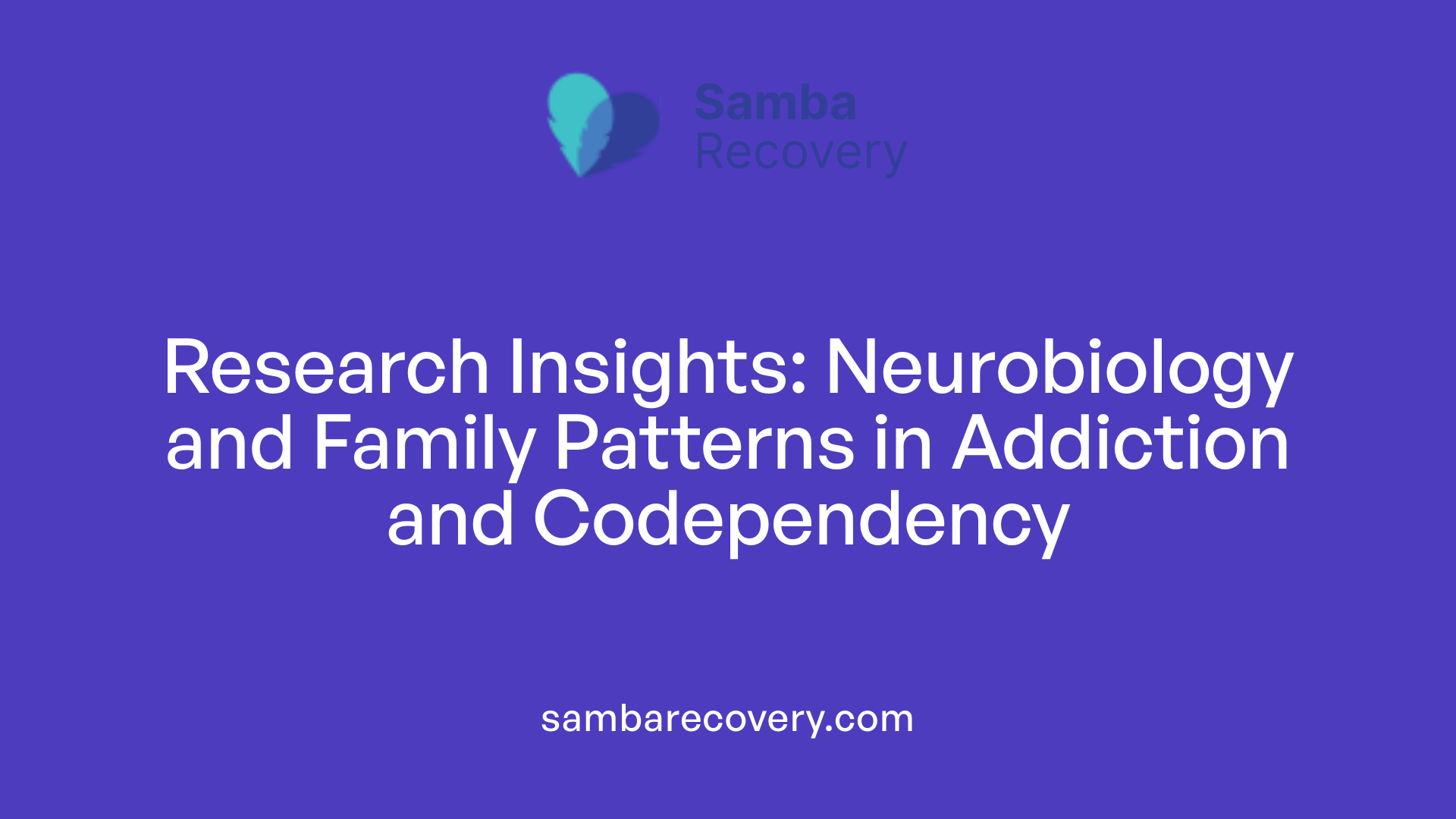
Research on addiction and codependency offers valuable insights into how these issues develop and interact. Scientific studies have shown that codependency often emerges as a dysfunctional coping strategy within families affected by substance use disorders (SUDs). For example, family members—particularly spouses and children—may adopt enabling behaviors, such as covering for the addict or making excuses, which inadvertently sustain the addiction cycle.
Neurobiological research indicates that traits like neuroticism and low levels of openness and agreeableness increase susceptibility to developing codependent behaviors. Neuroimaging studies have revealed that individuals with high codependency tendencies can exhibit reduced activity in the prefrontal cortex, an area responsible for decision-making and impulse control. These findings suggest a biological component where emotional regulation and control mechanisms are affected.
Psychological models further delve into how childhood experiences influence the development of codependency. Factors such as dysfunctional family environments, emotional neglect, and early attachment issues predispose individuals to seek validation from others and prioritize others’ needs over their own. This pattern can be reinforced over time, creating deep-rooted behaviors that persist into adulthood.
Various theoretical frameworks attempt to explain the development of codependency. The disease model views it as a set of maladaptive behavioral patterns resulting from addiction, while the personality model emphasizes traits like low self-esteem and dependency. Interactionist models focus on the systemic relationship dynamics, highlighting how mutual reinforcement between the addict and the codependent individual perpetuates both issues.
While research underscores the complexity of codependency, it is important to note that it is not a universally recognized diagnosis. Nonetheless, integrated treatment approaches—combining biological, psychological, and relational perspectives—are effective for addressing the intertwined nature of addiction and codependency. Continued scientific exploration aims to refine understanding and improve intervention strategies.
Supporting Recovery and Personal Growth
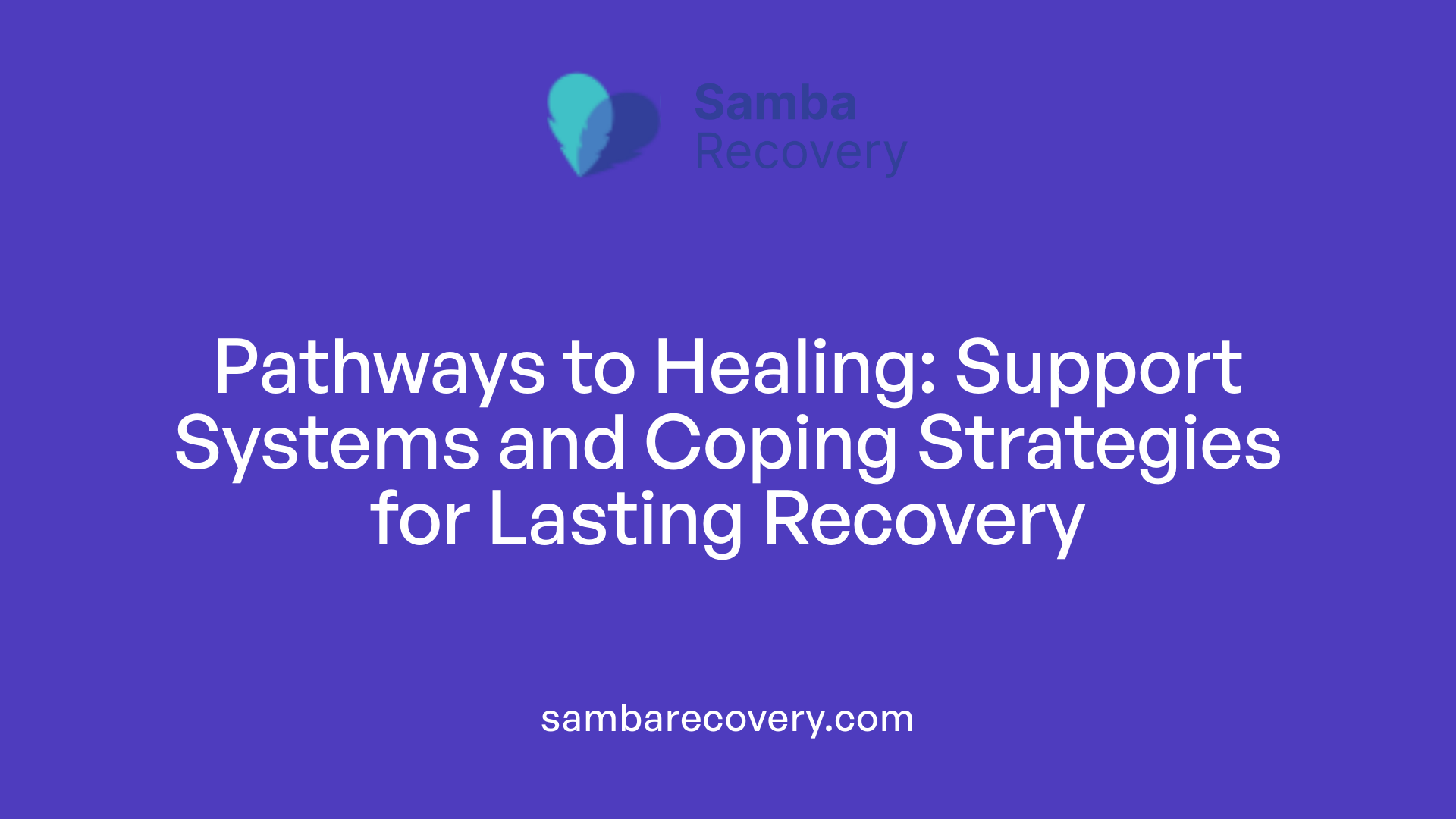
How can affected individuals find support and develop coping mechanisms?
Individuals dealing with codependency or addiction often face complex emotional challenges. The first step toward healing is seeking appropriate support. Therapy plays a crucial role, offering a safe space to explore underlying issues such as low self-esteem, trauma, or dysfunctional family dynamics. Support groups like Co-Dependents Anonymous (CODA) provide communal understanding and encouragement, fostering a sense of belonging and shared experience.
Building a toolkit of coping strategies is vital for resilience. Techniques such as stress management, problem-solving, and emotional regulation can help manage the intense feelings that often accompany these conditions. Engaging in activities like mindfulness, meditation, yoga, or deep breathing exercises can significantly reduce stress levels and promote emotional balance.
Maintaining healthy relationships and seeking social support from trusted friends, family, or mental health professionals can buffer feelings of loneliness or overwhelm. Practicing self-care—prioritizing one’s physical health, setting boundaries, and pursuing hobbies—reinforces personal well-being.
Developing flexible, adaptive coping mechanisms enables individuals to respond effectively to life’s challenges. Emphasizing resilience—by recognizing personal strengths, fostering optimism, and cultivating emotional awareness—helps sustain recovery over the long term. This proactive approach empowers sufferers to reclaim control over their mental health and foster continuous personal growth.
More Information
Seeking detailed strategies for managing addiction and codependency, including therapy options, lifestyle adjustments, and support resources, can offer a comprehensive pathway to recovery. Exploring reputable sources with search queries such as "Recovery and coping strategies for addiction and codependency" can provide valuable insights and guidance tailored to individual needs.
Healing and Moving Forward
Understanding the deep-seated connection between addiction and codependency is essential for effective recovery. These intertwined issues require comprehensive treatment approaches that address both behavioral patterns and underlying emotional vulnerabilities. By fostering awareness, setting healthy boundaries, seeking professional help, and participating in support networks, individuals can break free from destructive cycles. Recovery is a continuous process of healing, self-discovery, and growth—one that ultimately restores personal autonomy and nurtures healthier, more resilient relationships.
References
- Codependency and Addiction: Breaking the Cycle
- The Correlation Between Codependency and Addiction
- Substance Use Disorder and Codependent Relationships
- Co-Dependency | Mental Health America
- Codependency and Addiction: Loving a Using Addict | GH
- The Vicious Cycle of Codependency and Addiction
- Codependency and Addiction: Breaking the Cycle – Willingway
- Codependency and addiction | Mental Health | UKAT






